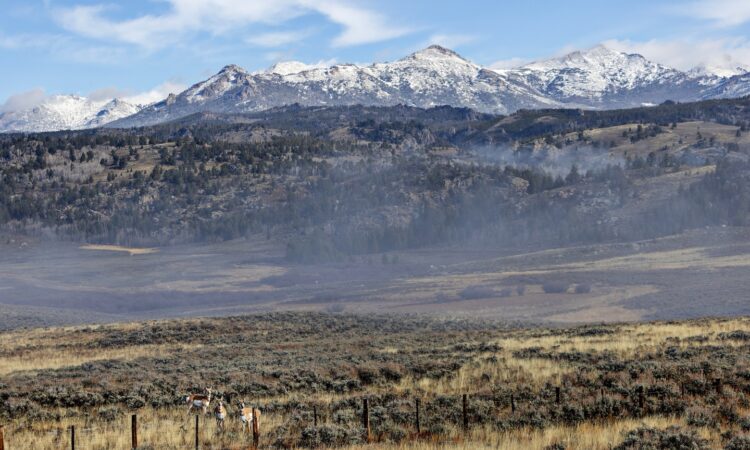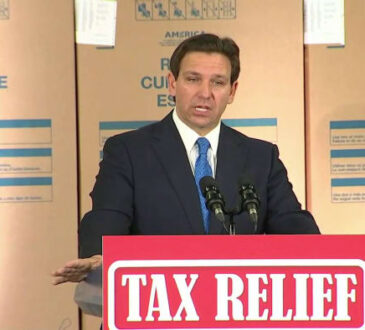
Interior’s Bureau of Land Management, known as the nation’s largest landlord, has long offered leases to oil and gas companies, mining firms and ranchers. Now, for the first time, the nearly 80-year-old agency will auction off “restoration leases” and “mitigation leases” to entities with plans to restore or conserve public lands.
“Today’s final rule helps restore balance to our public lands as we continue using the best-available science to restore habitats, guide strategic and responsible development, and sustain our public lands for generations to come,” Interior Secretary Deb Haaland said in a statement.
Under President Biden, the BLM has put a greater emphasis on protecting public lands from the twin threats of climate change and development. Tracy Stone-Manning, the bureau’s director, has warned that hotter, drier climates are driving longer and more intense wildfires and drought across the American West. At the same time, development has fragmented and destroyed wildlife habitat and migratory corridors.
“We oversee 245 million acres, and every land manager will tell you that climate change is already happening. It’s already impacting our public lands,” Stone-Manning said during a Washington Post Live event last year. “We see it in pretty obvious ways, through unprecedented wildfires.”
The fossil fuel industry, a frequent foe of the Biden administration, has chafed at the BLM’s approach. It has called the public lands rule an example of regulatory overreach that will stifle domestic energy production, even as the United States pumps more oil than any nation in history.
Kathleen Sgamma, president of the Western Energy Alliance, which represents oil and gas companies, said the group plans to challenge the BLM rule in court. She said the policy appears to violate the Federal Land Policy and Management Act, the 1976 law that tasked the bureau with overseeing “multiple uses” of public lands for current and future generations.
“We have no choice but to litigate,” Sgamma said. “These conservation leases seem to be designed to preclude energy development on federal lands.”
The BLM’s proposed rule released last year sparked especially intense outrage in Wyoming, an energy powerhouse that accounts for nearly one-tenth of U.S. fossil fuel production. Some Wyoming Republicans have claimed that the BLM is colluding with liberal environmental groups to put millions of acres off-limits to development.
Sen. John Barrasso (R-Wyo.) said Thursday he plans to introduce legislation to repeal the BLM rule using the Congressional Review Act, which allows lawmakers to overturn regulations by a simple majority vote. “With this rule, President Biden is allowing federal bureaucrats to destroy our way of life,” Barrasso said in a statement.
Aaron Weiss, deputy director of the Center for Western Priorities, an advocacy group, said some Republican officials have spread “disinformation and conspiracy theories” about the rule. He noted that during a House Natural Resources Committee hearing last year, South Dakota Gov. Kristi L. Noem (R) claimed the draft rule would allow Chinese citizens to purchase leases on U.S. lands.
Unlike the proposed rule, the final rule clarifies that “leases cannot be held by foreign persons.” It also offers “restoration leases” and “mitigation leases” rather than “conservation leases” — a linguistic tweak that seems designed to skirt the politicization of the word “conservation,” Weiss said.
Mitigation leases will allow lease holders to offset the impact of their activities. For example, a rancher whose cattle grazing is degrading the land could be required to purchase a mitigation lease during the permitting process. The rancher could then work with a local conservation group to restore nearby habitat for the greater sage grouse, an imperiled bird of the West.
Renewable energy developers won’t be immune from the rule. They could buy mitigation leases if their wind or solar farms are affecting wildlife or watersheds, said Danielle Murray, vice president of conservation policy at the Conservation Lands Foundation.
The final rule also directs the BLM to prioritize landscape health for the first time and to incorporate Indigenous knowledge into its decision-making. The latter is a top priority of Haaland, the first Native American to serve as a Cabinet secretary and lead a department that once oversaw the removal of Indigenous people from their land.
The Trump administration took a vastly different approach to managing public lands than Biden officials. President Donald Trump briefly moved the BLM’s headquarters from Washington to Grand Junction, Colo., a hot spot for natural gas production. More than 87 percent of the affected employees either resigned or retired rather than move to Colorado, depriving the agency of expertise and disrupting its operations.
To lead the BLM, Trump tapped William Perry Pendley, a conservative lawyer who had previously advocated for selling off public lands across the country. Pendley, who was never confirmed by the Senate, pushed the bureau to maximize oil, gas and mineral development.
Should Trump return to office, “the priority has to be oil and gas,” Pendley said in a recent interview.




